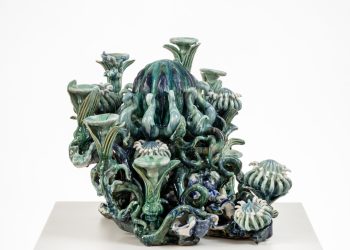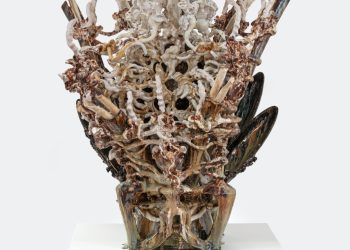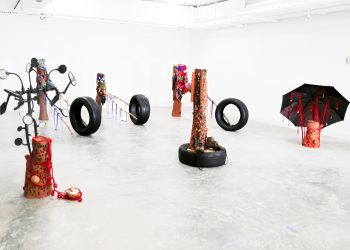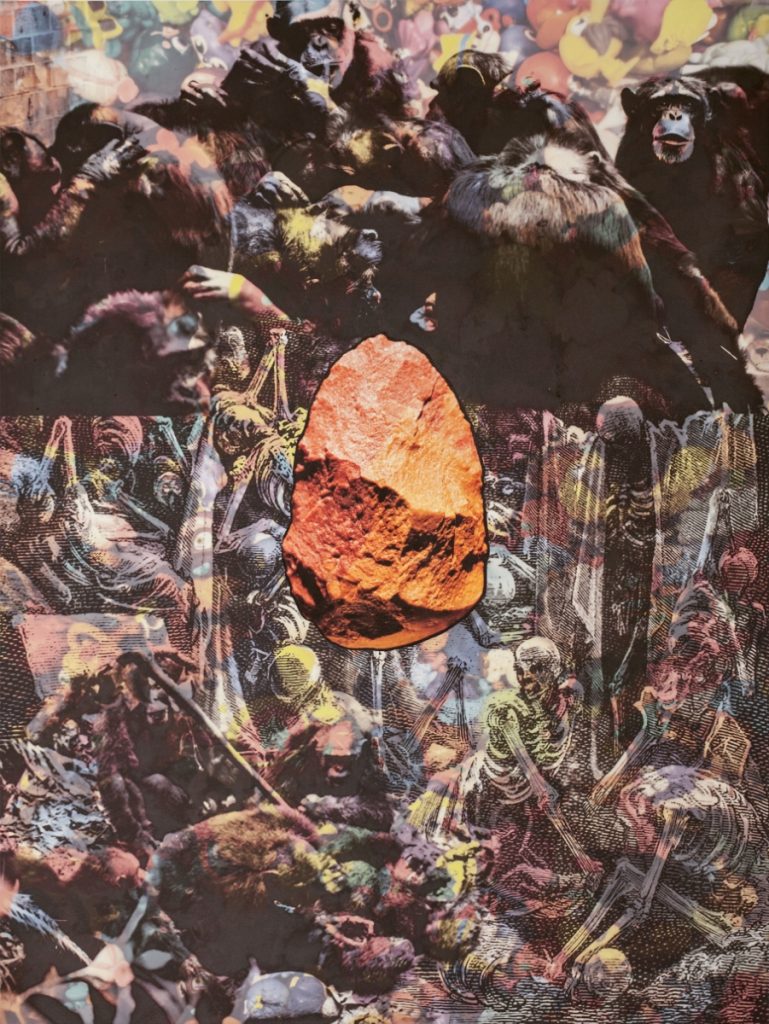

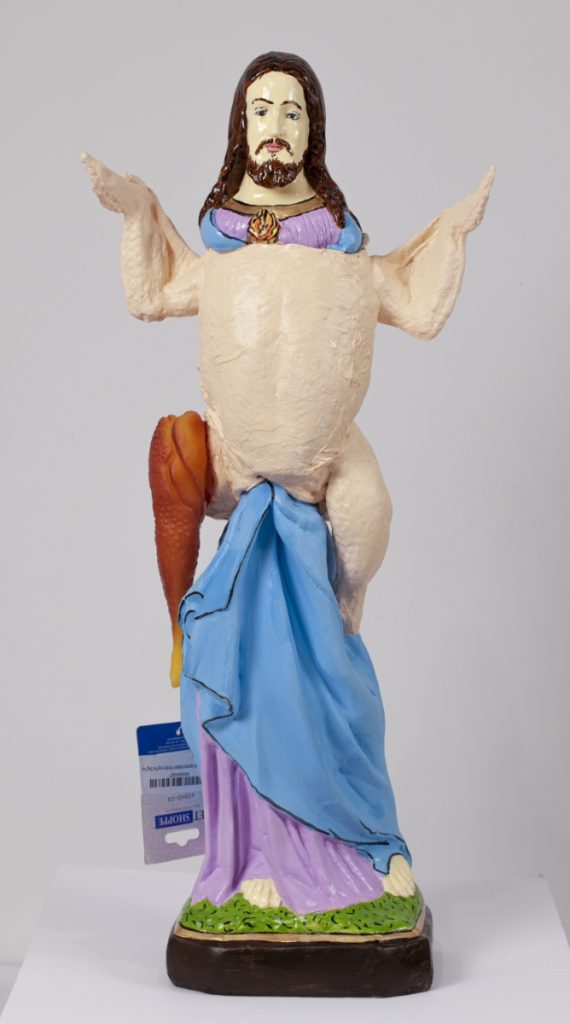
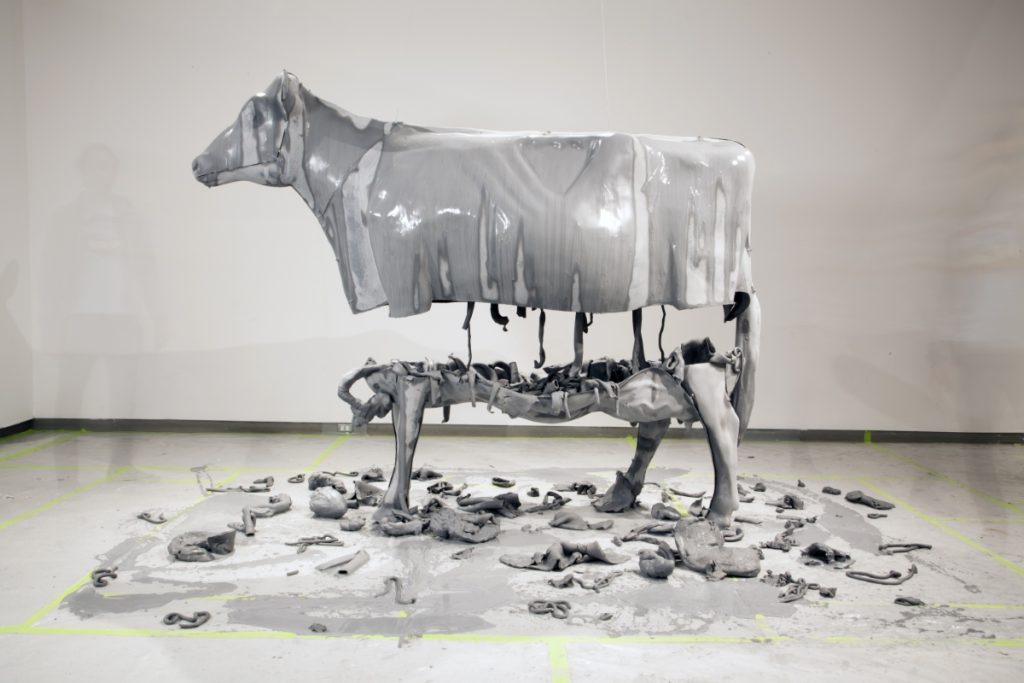
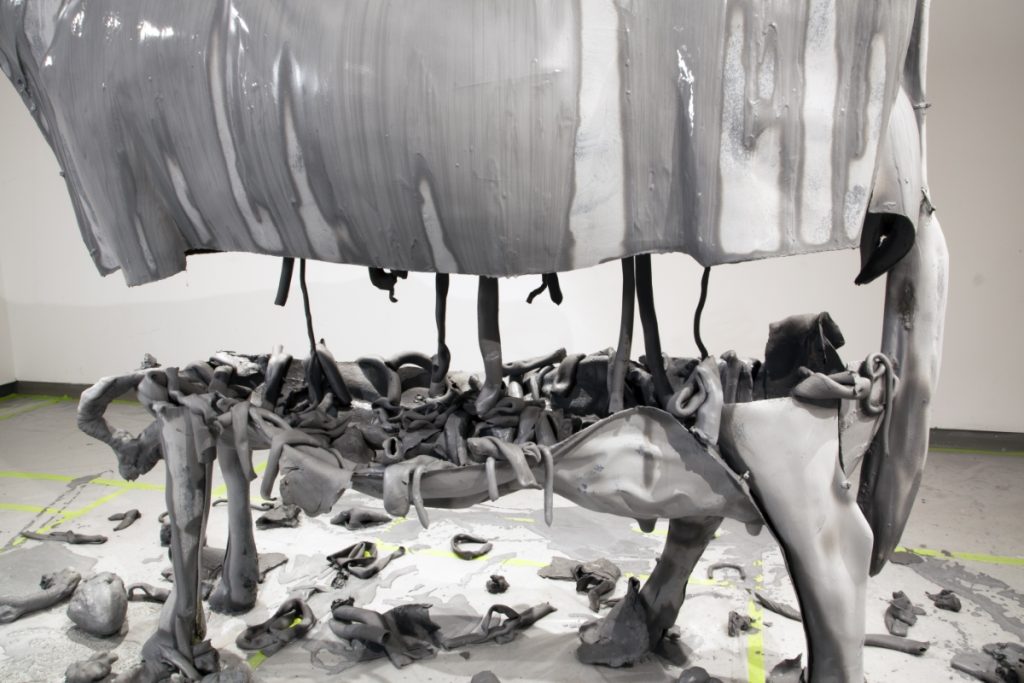
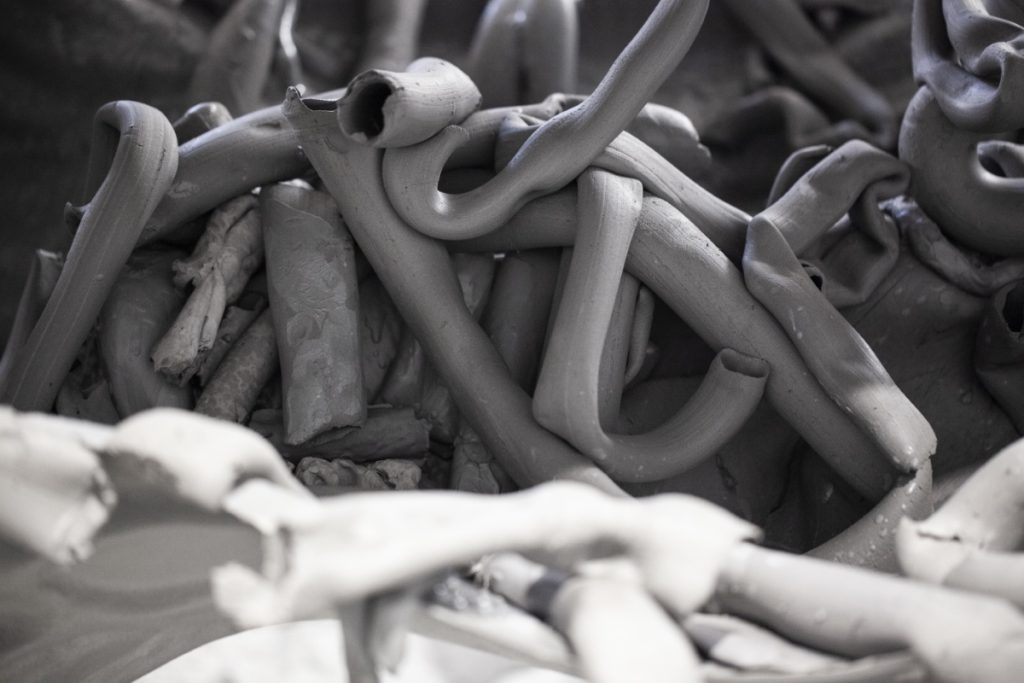
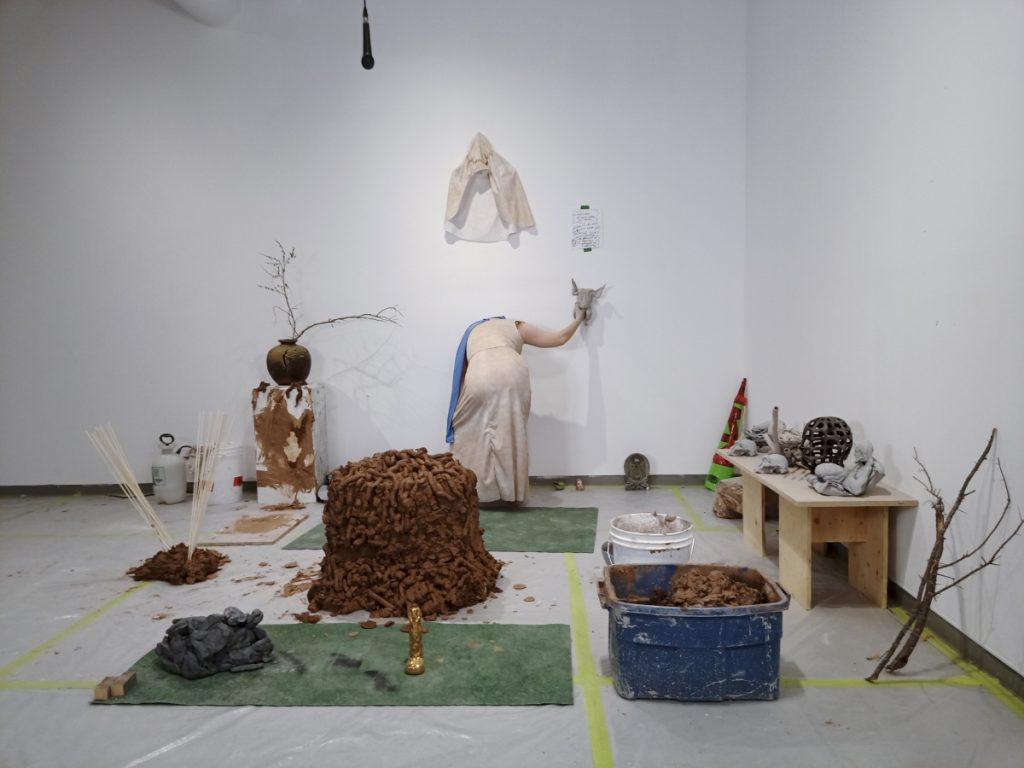
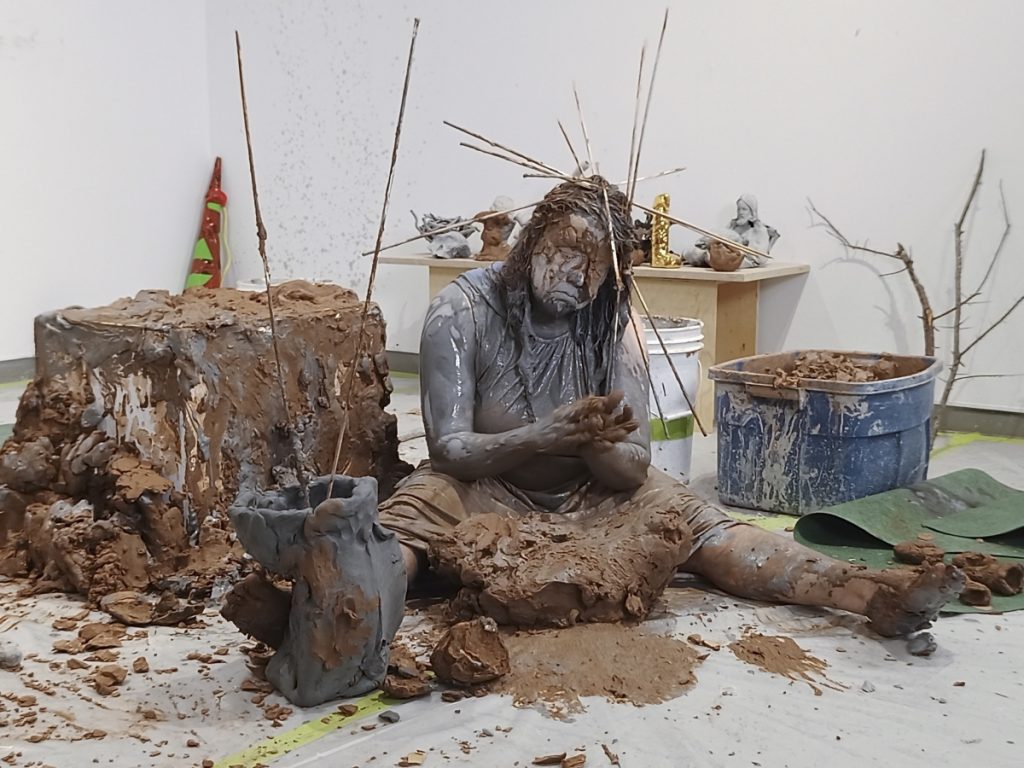
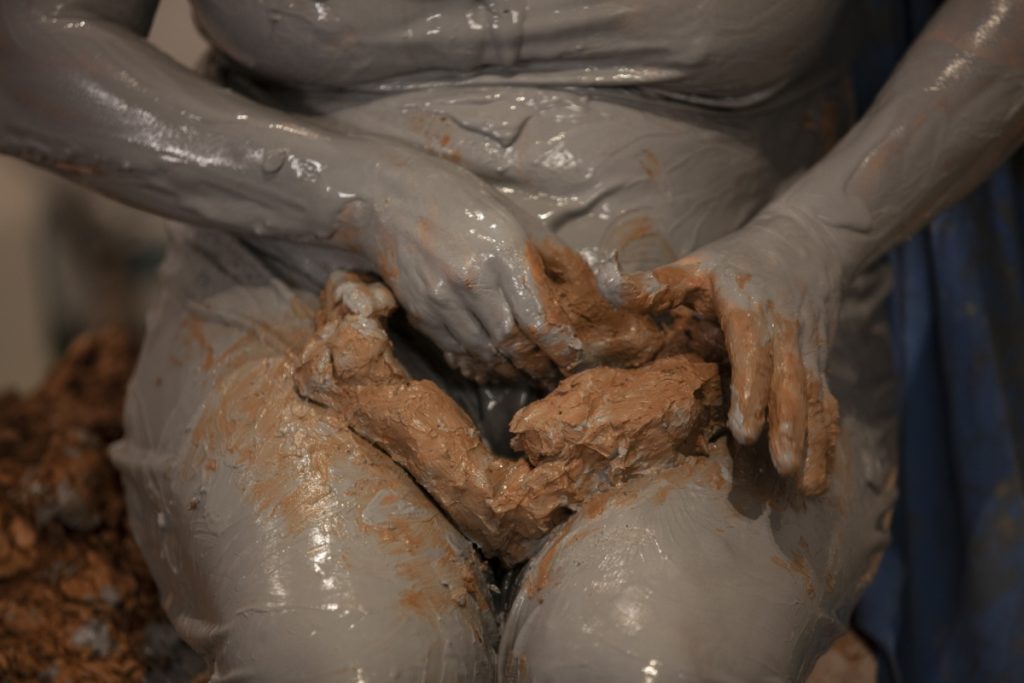
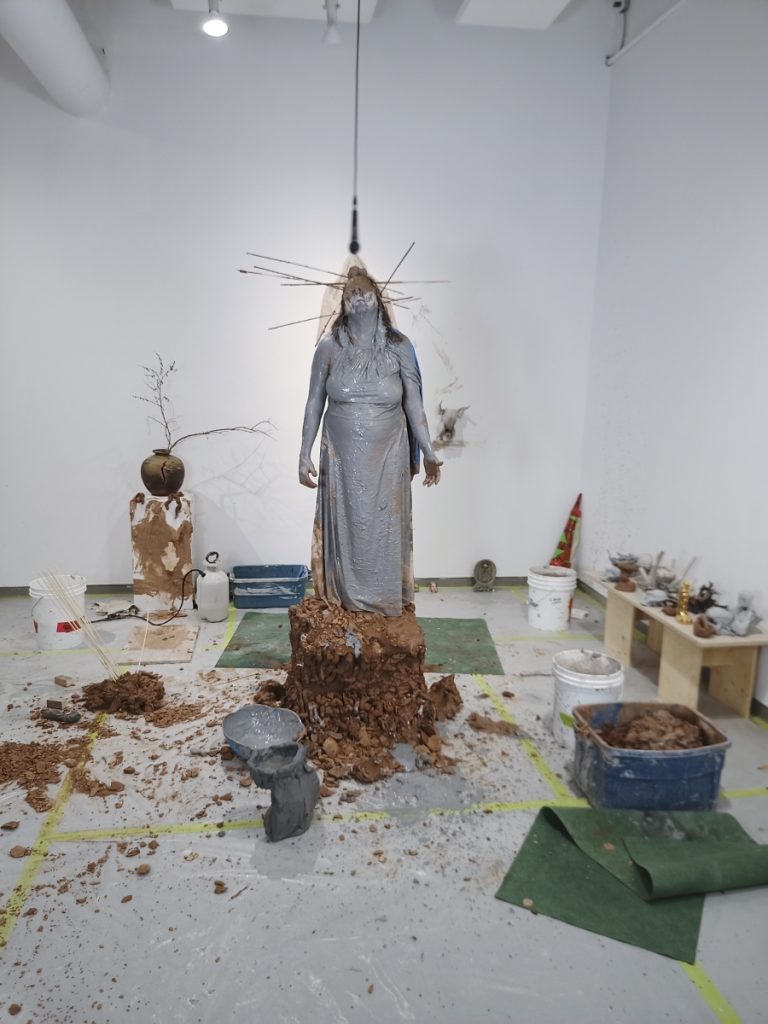
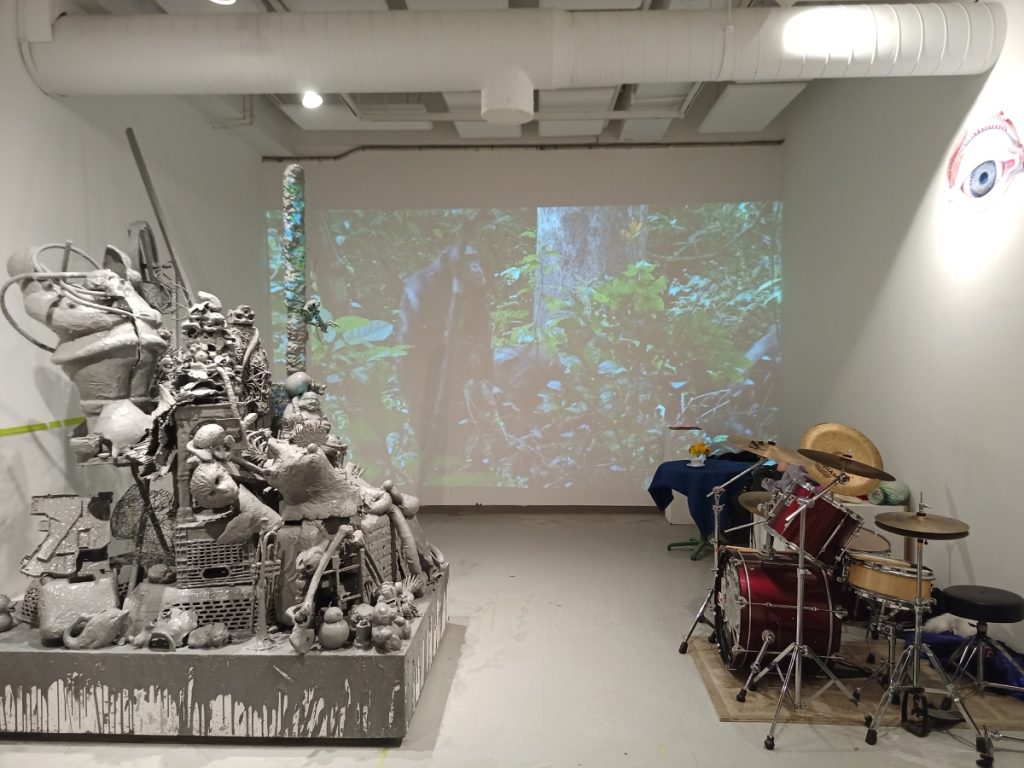
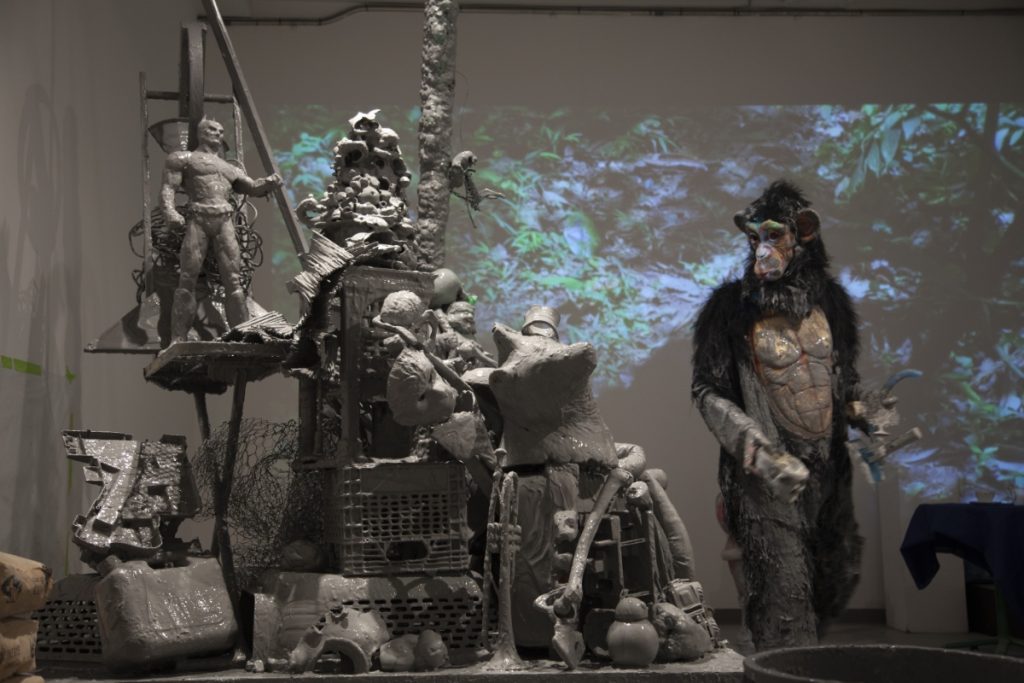

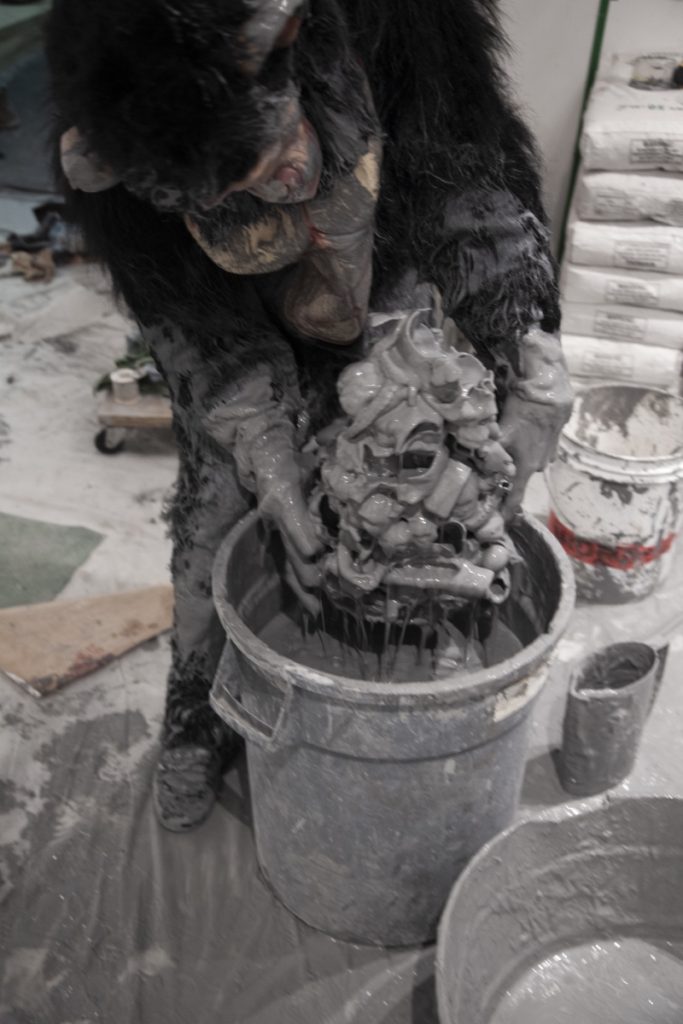
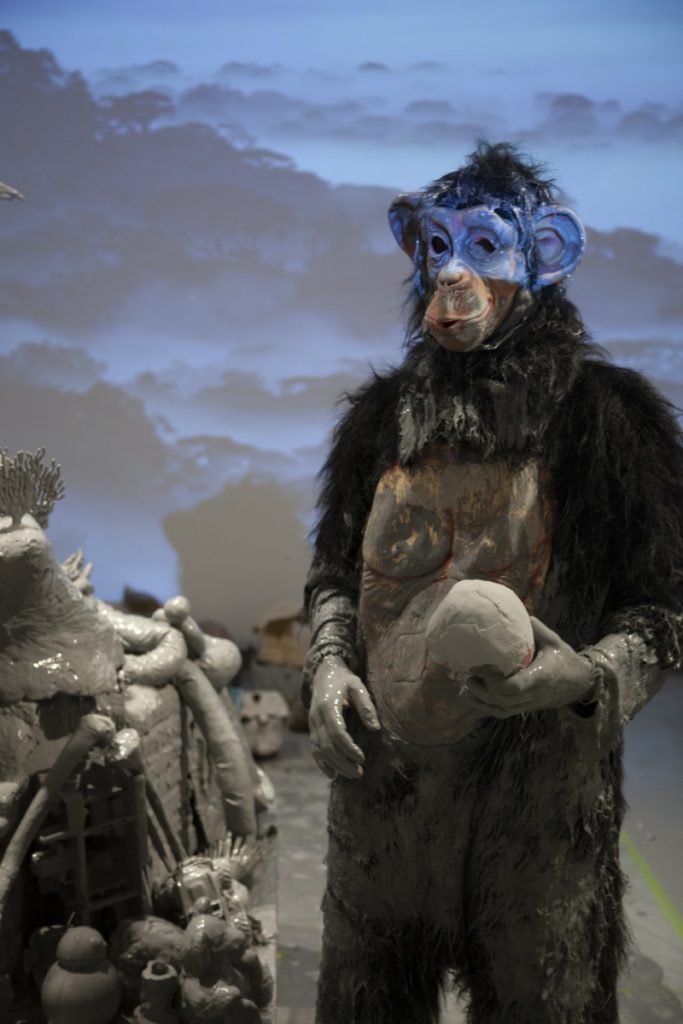

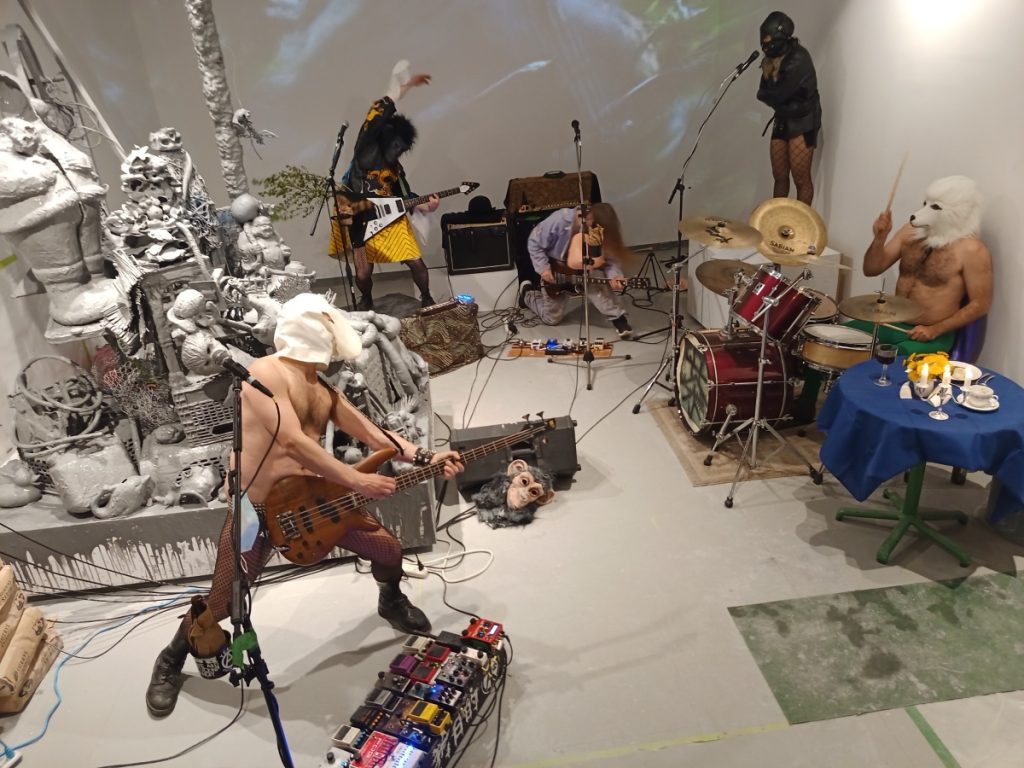
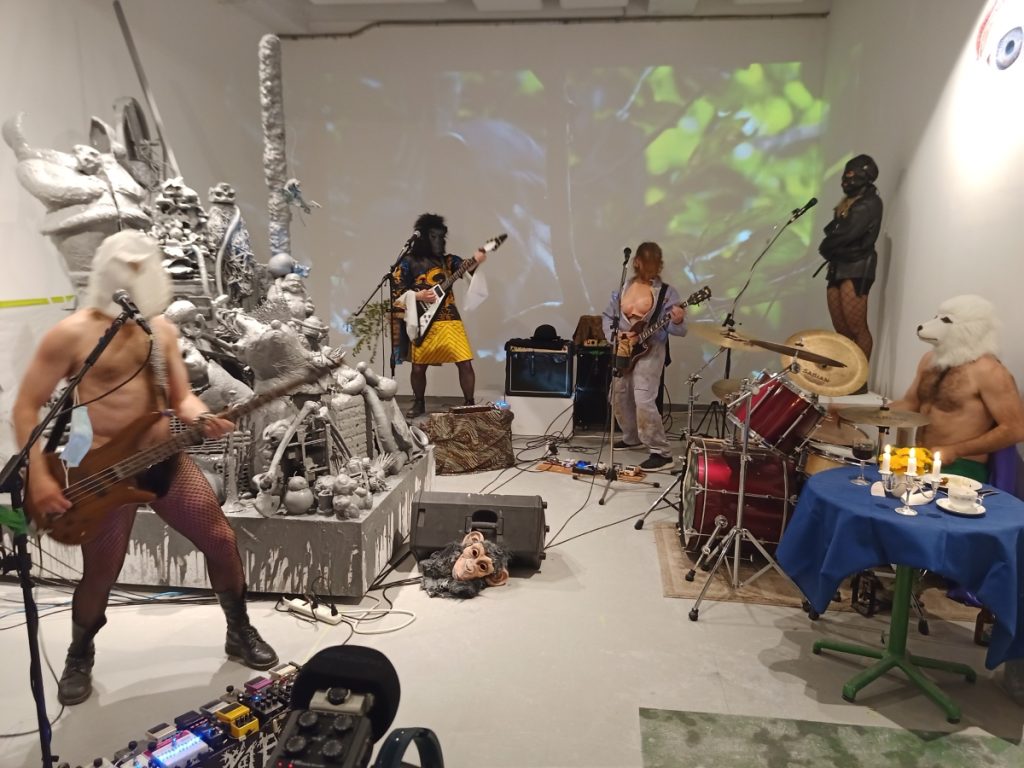
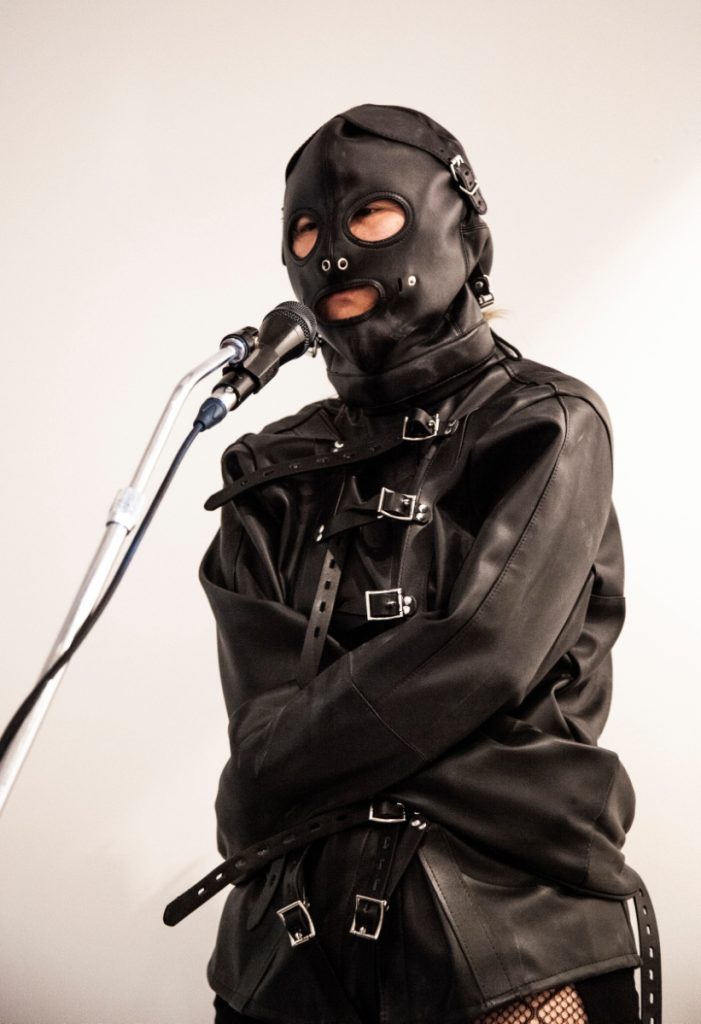
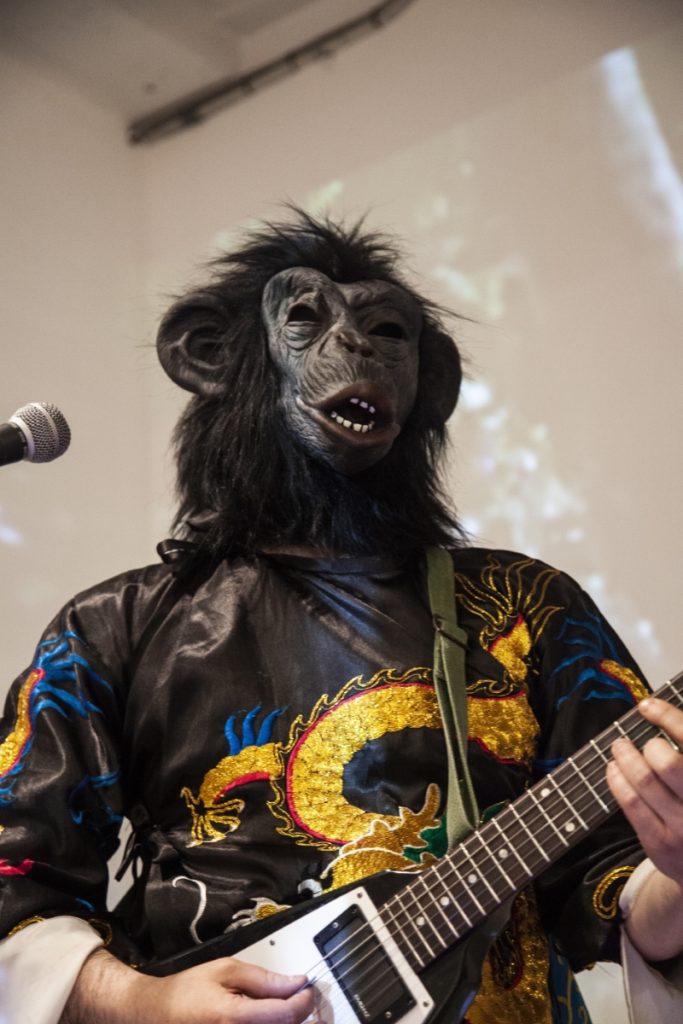
Yanik Potvin: Behavioural Artifacts Comportementaux, 2021
The activities of this research-creation project all stem from inquiries pertaining to the practice of ceramics. These inquiries underpin explorations that extend in several directions, but primarily to experiences that are not always rooted in an object-oriented practice. As someone who comes first and foremost from archaeology, my interest for clay work is not limited to the physico-chemical sphere, for it more broadly encompasses ceramics as a human activity. It is important to consider everything that could be proposed as research if one steps back from the result after the firing, so as to reflect on the production context or transformation process of clay. These additional dimensions allow us to search for creative avenues in the different stages of consistency of clay, but also in references belonging to other human cultures in the long time of our relationship with this material, and of its relationships towards us. Clay thus appears as a document that allows us to make comparisons between humans from eras as distant as the Upper Paleolithic, Jōmon Japan or Ancient Greece. As a document, it allows us to deduce past behaviours and to glimpse recurrences of our species; it speaks of sedentarization, cultural identifiers, exchanges and trade. Ceramics becomes a disciplinary crossroads, it leads to reflections on contemporary art, arts and crafts, archaeology, material culture and ethnology.
All the possible comparisons that the clay material itself invites are immeasurable and offer a lot of information for the arts researcher that I am. This attitude that aims to compare in order to seek knowledge about human groups through artefacts or behaviours is also shared by anthropology. I have always situated myself between the two. Even in the arts, I habitually make use of a vocabulary specific to the humanities, it comes from one of my identities. I believe that these borrowings are indicative of a fertile intersection, artists and designers’ current revival for “crafts materials” indeed coincides with anthropology’s marked interest for creative practices. This parallel development perhaps indicates that the two phenomena are linked and that one increasingly calls upon the other to compose ways of doing things that affect each other.
This convergence between artistic practices, material culture in the humanities and social sciences and techniques and materials in art history is therefore desirable, possible and even partially already carried out. The abandonment of the work as a “product of a making” has led me to bring together the hylomorphic approach to creation with a morphogenesis that focuses on “what is being made”. These pragmatic approaches to creation propose to regard art primarily as an activity and to shift the artist’s attention towards objects and processes, namely the interactions, acts, and gestures that give rise to a work. This shift requires the creation of broader categories, such as behavioural artefacts that encompass traces, objects, lists of instructions, ideas, or concepts.
Behavioural Artifacts Comportementaux, 2021, clay, ceramic, digital prints, found objects, research-creation residency, Centre BANG art Center, Saguenay, QC, Canada.
In collaboration with artists Julie Andrée T. and Gouride (Huai Dan, Huo Yan, Xuli, Qioa Ke Li, Fu Lan Ge).
Photo credits: Mathieu Girard
Links
- • https://www.youtube.com/shorts/Cu0zGgS5qIg
- • https://www.youtube.com/shorts/p0Kt-nN_efE
- • https://gouride.bandcamp.com/
- • https://www.youtube.com/watch?v=cNeCDbhwY8U



